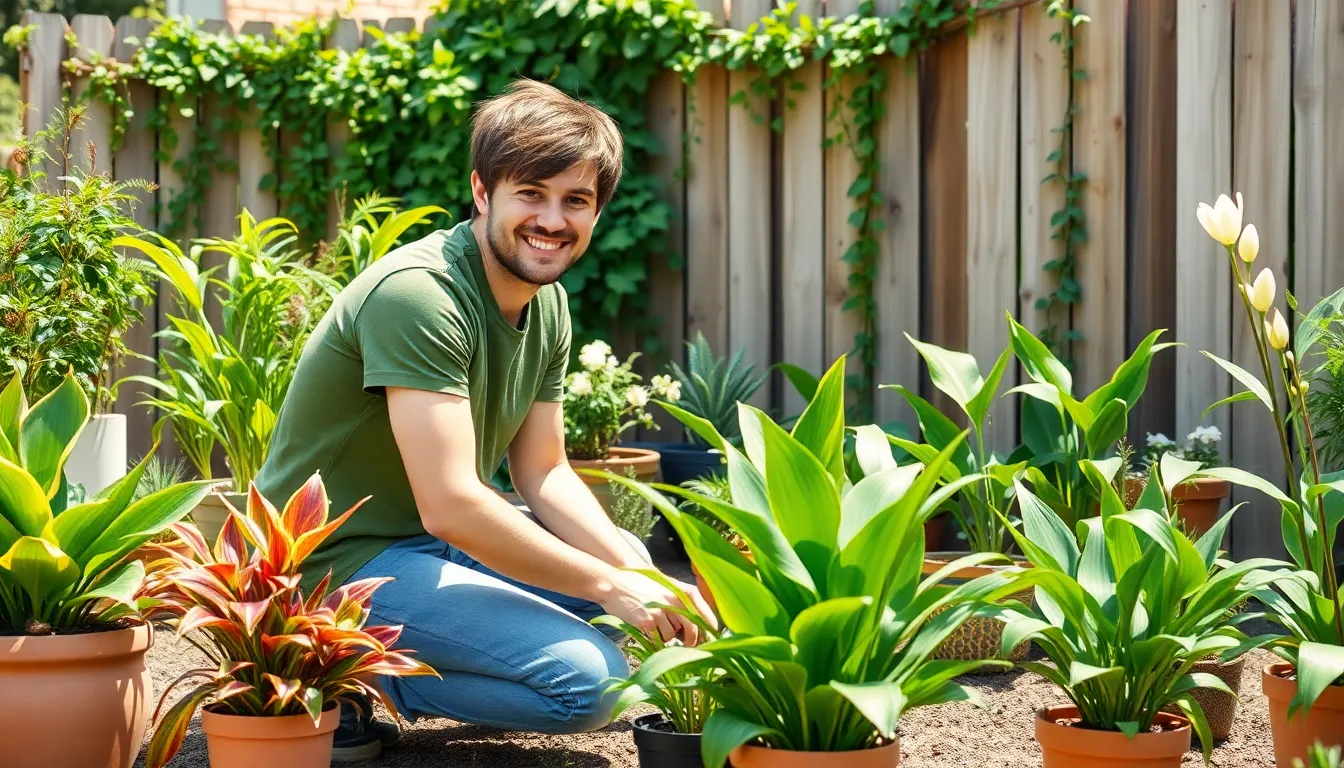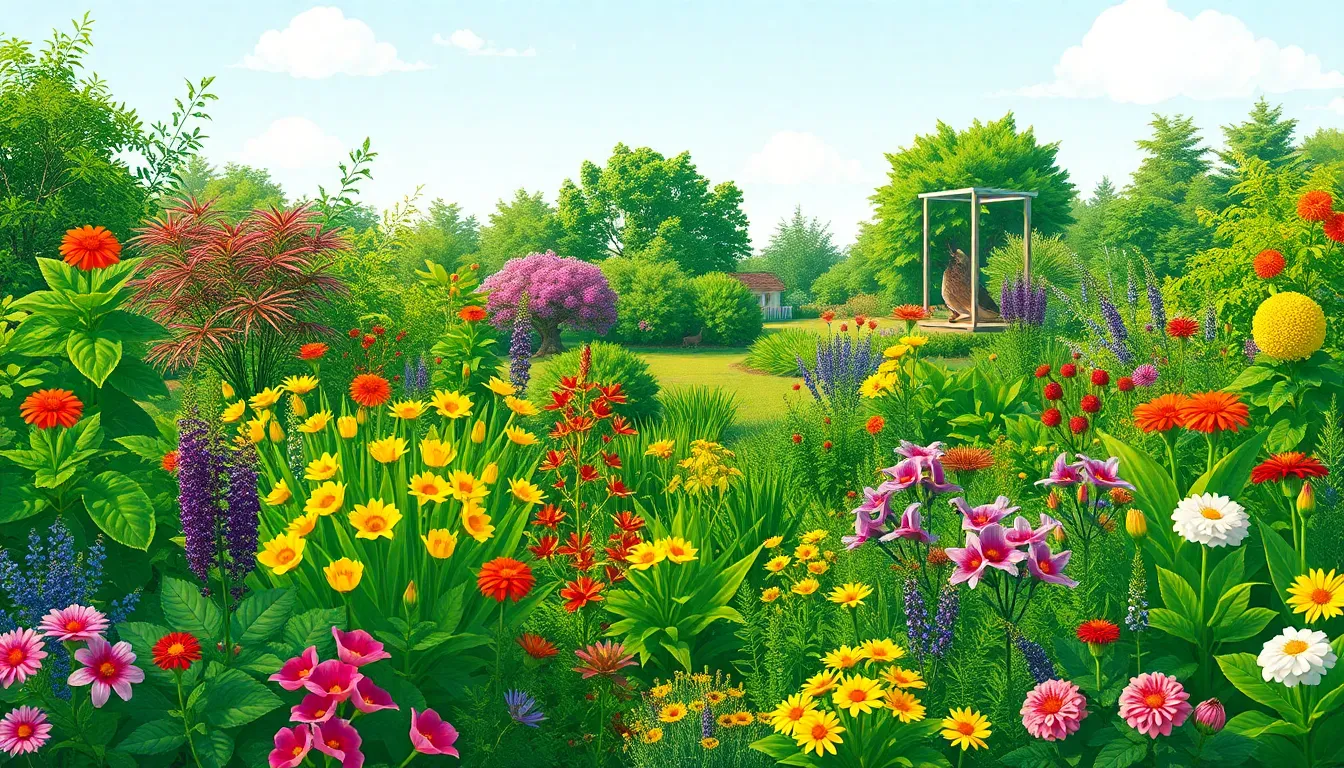Physical Address
304 North Cardinal St.
Dorchester Center, MA 02124
Physical Address
304 North Cardinal St.
Dorchester Center, MA 02124

In a world where plastic straws seem to be the new villains, sustainable plants are the superheroes we never knew we needed. These green warriors not only beautify spaces but also help save the planet one leaf at a time. Imagine transforming your home into a lush oasis while doing your part to combat climate change. Who knew eco-friendly could look so good?
But wait, there’s more! Sustainable plants are like that friend who always brings the best snacks to the party—everyone wants them around. They purify the air, reduce stress, and even boost productivity. So why not invite these leafy companions into your life? Dive into the world of sustainable plants and discover how a little greenery can make a big difference, all while keeping your home stylish and your conscience clear.
Sustainable plants refer to species that contribute positively to the environment. These plants thrive with minimal resource input while maximizing ecological benefits. Examples include native species, which are adapted to local conditions and require less water and maintenance.
Numerous benefits stem from choosing sustainable plants. They enhance air quality by filtering pollutants and producing oxygen. Some species also support biodiversity, providing habitat for various insects and wildlife. In addition, they often resist pests and diseases, reducing the need for chemical treatments.
Houseplants like pothos, snake plants, and spider plants exemplify sustainability in home environments. These plants are not only easy to care for but also effective at improving indoor air quality. Another exemplary choice is the peace lily, known for its ability to absorb harmful toxins.
Local nurseries often provide guidance on selecting the most suitable sustainable plants for specific regions. It’s vital to consider climate, soil type, and sunlight availability when making selections. Utilizing this knowledge fosters growth and health in home gardens.
Incorporating sustainable plants into everyday spaces promotes both aesthetic appeal and ecological responsibility. By choosing plants that reflect environmental sustainability, individuals actively contribute to a healthier planet. Overall, the integration of sustainable plants serves as an essential step toward creating eco-friendly living environments.

Sustainable plants provide numerous benefits that extend beyond simple aesthetics. Their ecological advantages substantially impact both the environment and the economy.
Sustainable plants enhance air quality by naturally filtering pollutants. They absorb carbon dioxide and release oxygen, supporting cleaner indoor environments. Additionally, these plants promote biodiversity by providing habitats for various wildlife. Choosing native plants helps to maintain local ecosystems and requires less water for growth. Reduced resource consumption leads to lower energy usage, further mitigating climate change effects. Pest resistance in sustainable varieties minimizes the need for harmful pesticides, protecting surrounding ecosystems. Overall, incorporating these plants contributes to healthier surroundings and a more robust planetary ecosystem.
Investing in sustainable plants offers both immediate and long-term economic benefits. Lower maintenance costs result from selecting plants that require less watering and care. Homeowners notice reductions in utility bills due to improved energy efficiency provided by plants that insulate interiors. Businesses find that incorporating greenery can boost productivity and employee satisfaction, driving better overall performance. Supporting local nurseries for sustainable plant purchases helps stimulate community economies. By prioritizing native species, individuals promote sustainable agriculture, creating jobs and empowering local farmers. These economic advantages make sustainable plants a wise investment for any setting.
Sustainable plants come in various forms, each offering unique benefits to the environment and enhancing any space. Here are some types worth considering.
Native plants thrive in local climates, requiring less water and maintenance. These species support biodiversity by providing habitats for native wildlife. Incorporating them fosters a balanced ecosystem, promoting natural pest resistance. Examples include coneflowers and black-eyed Susans, which attract pollinators like bees and butterflies. Understanding the local flora enables individuals to choose suitable plants for their gardens or homes.
Edible plants not only offer sustainable food options but also contribute to green spaces. Herbs such as basil and rosemary grow easily and can enhance the culinary experience. Additionally, vegetables like tomatoes and peppers can thrive in urban gardens, providing fresh produce with minimal carbon footprint. These plants encourage healthy eating while reducing dependence on commercially grown foods that rely on pesticides and fertilizers. Individuals can harvest fresh ingredients while enjoying the personal satisfaction of growing their own food.
Drought-resistant plants excel in arid conditions, conserving water while maintaining beauty. Species like succulents and lavender are excellent examples of low-water requirements. These plants can be essential for gardens in dry climates and contribute to water conservation efforts. Implementing drought-resistant varieties not only reduces irrigation needs but also supports local ecosystems by adapting to challenging environments. Individuals can create lush landscapes sustainably while minimizing resource consumption.
Selecting sustainable plants for the garden starts with understanding local conditions. Local nurseries often provide native plant selections that thrive in specific climates. These plants require minimal water and effort, making maintenance simpler and less resource-intensive.
Incorporating edible plants creates both beauty and utility. Herbs like basil and rosemary enhance garden aesthetics while offering fresh flavors for cooking. Vegetables such as tomatoes and peppers contribute to sustainable food options, reducing reliance on store-bought produce.
Choosing drought-resistant plants contributes to a water-efficient garden. Succulents and lavender flourish in arid conditions, requiring less water to thrive. Grouping these plants together allows for strategic placement based on their water needs, promoting efficient use of resources.
Creating diverse plant beds attracts beneficial wildlife. Mixing native species with sustainable plants fosters biodiversity and provides habitats for pollinators. A diverse garden supports the local ecosystem, which strengthens environmental health.
Applying organic mulch enhances soil health while retaining moisture. This practice reduces the need for frequent watering and minimizes weed growth. Doing this not only aids sustainable gardening but also encourages plant growth.
Planning garden layouts around the sun’s path optimizes light exposure. Different plants thrive in varying light conditions, so it’s important to consider this aspect. Ensuring that sun-loving plants receive adequate sunlight while shading those needing less will enhance the overall health of the garden.
Finally, educating on proper care techniques ensures longevity for sustainable plants. Knowledge about pruning, watering, and pest management helps maintain garden vitality. Finding local workshops and resources can provide valuable insights and tips for success.
Embracing sustainable plants is more than just a trend; it’s a meaningful choice that benefits both personal spaces and the environment. By selecting plants that thrive with minimal resources, individuals can enhance their homes while contributing to ecological health.
These plants not only beautify living areas but also improve air quality and support local biodiversity. Incorporating them into gardens or indoor settings fosters a connection to nature and promotes sustainable living practices.
As more people recognize the importance of these green allies, the collective impact can lead to healthier communities and a more resilient planet. Choosing sustainable plants is a step toward a greener future, making it easier to live harmoniously with the environment.